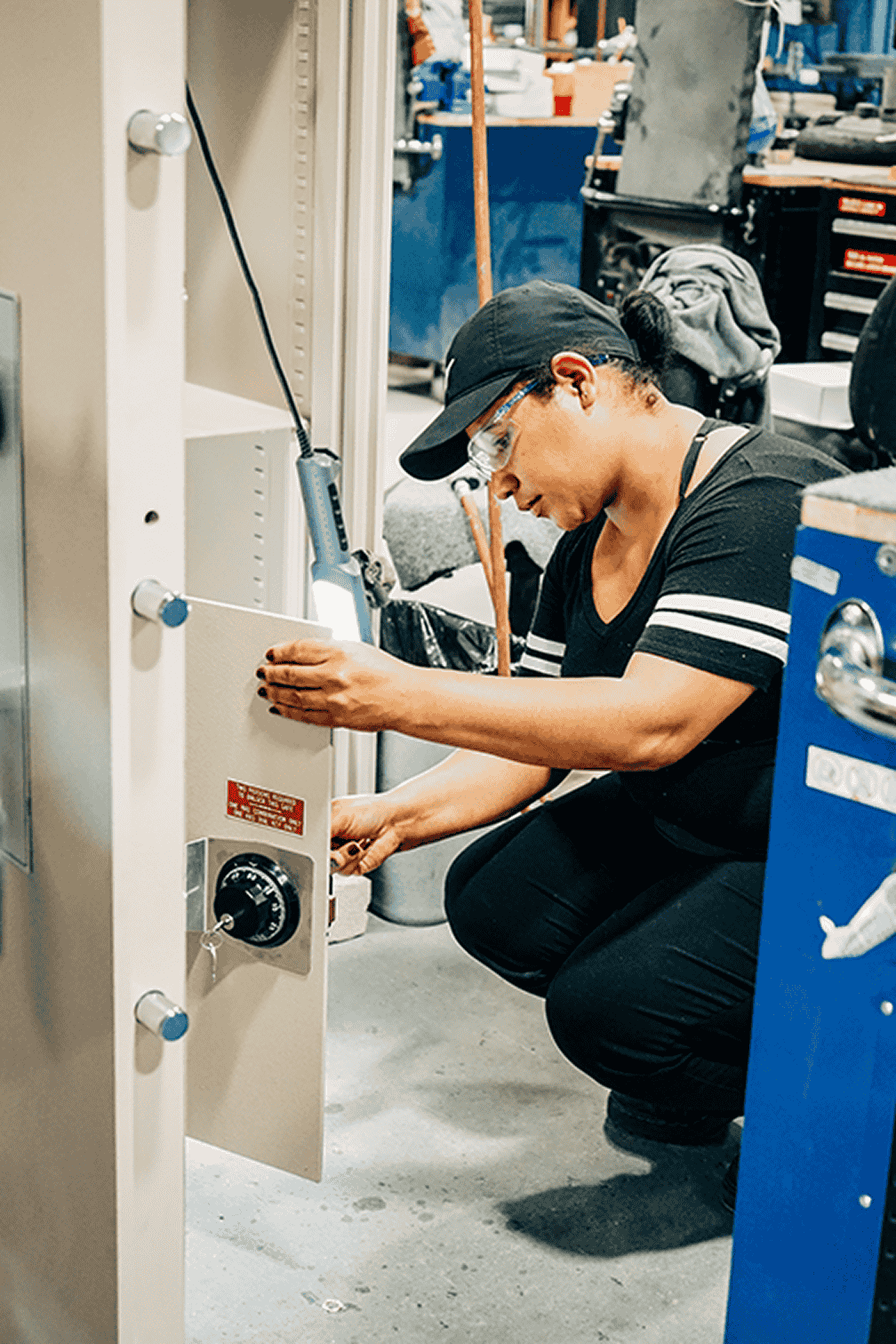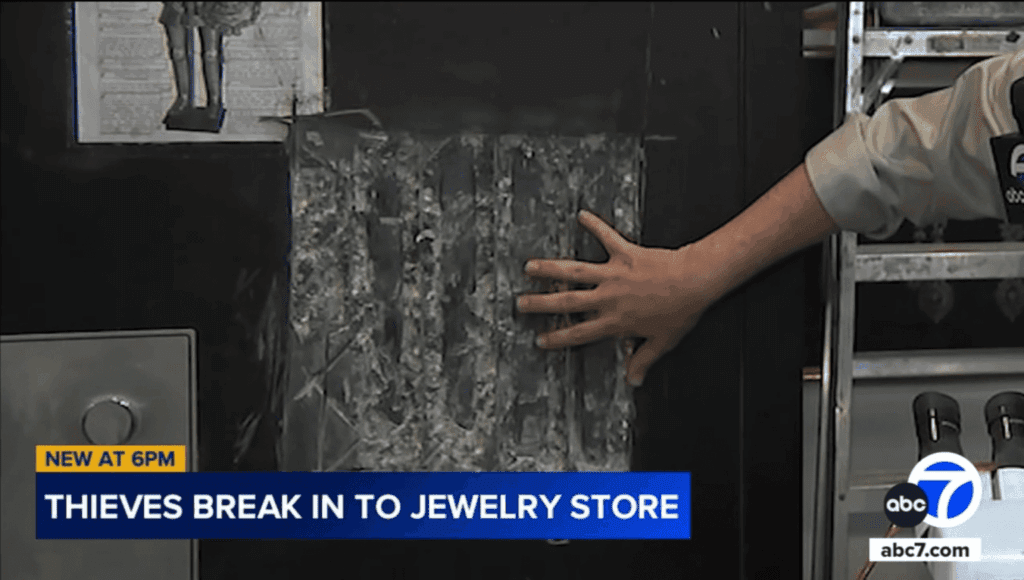When most people think about safes, they imagine thick doors, sturdy locks, and impenetrable construction. But not all safe doors offer the same level of security, and what’s behind the door is just as important as what you can see from the outside. The design, materials, and engineering of the door are some of the most critical factors that determine a safe’s ability to protect your valuables
Let’s break down the key components that separate a high-quality safe door from a vulnerable one.
Safe Door Materials
The first and most obvious feature to consider in a safe door is the steel itself. Steel thickness is typically measured in gauges—the lower the number, the thicker the steel. Thicker steel provides greater resistance to forced entry methods like prying and drilling.
But steel thickness isn’t the only variable. How that steel is constructed matters, too. Solid steel plates offer superior strength compared to laminated layers. Laminated steel may save on manufacturing costs, but it significantly reduces the door’s resistance to attacks.
Another often overlooked element is the fill material within the door. Fill can range from low-strength foams to high-density materials like concrete or proprietary blends. While heavier materials like cement offer better protection against drilling, they also add weight, which can limit how much steel can be used overall. American Security’s DryLight blend is a perfect example of how using a lightweight yet strong fill allows for more steel in both the door and the body, offering superior protection without the weight penalty.
Locking Mechanisms for Safe Doors
When we talk about locking mechanisms, we’re not referring to the type of lock you see on the outside—whether mechanical or electronic—but rather what’s happening behind the scenes.
A robust locking mechanism will include hardened steel components and advanced anti-tamper technology. Look for safes that include features such as:
- Hardplates: This helps to deflect or break drill bits attempting to reach the locking mechanism. American Security’s patented active hardplate, when tampered with, engages a series of pins that drive into the locking bar, preventing the door from being opened.
- Glass relockers: These trigger additional internal locking if tampered with.
- Advanced bolt designs: A great example of this is American Security’s Active 4x Locking System, which engages the bolts in multiple directions for maximum resistance to pry attacks.
These internal defenses make it significantly harder for intruders to compromise the safe through brute force or precision drilling.
For the locks themselves, you want to check to see if the product has been tested and certified. For example, many American Security locks are UL-rated, meaning they’ve undergone rigorous testing to get the stamp of approval from Underwriters Laboratories.
Most biometric lock options don’t offer the same level of protection as a mechanical or electronic lock. They’re often unreliable and could make it harder for you to access your safe during an emergency where you need to act fast. This can be due to your fingerprint having debris or a cut, which prohibits the technology from recognizing you as an authorized user.
Additional Key Features of Safe Doors
The lock and material used for a safe door are obvious components to consider. However, there are a few other factors that can be easily forgotten about when you’re selecting the right safe for your valuables.
Bolt Work
Bolt work refers to the number and configuration of locking bolts that secure the door when closed. A higher number of bolts generally equates to stronger protection, but placement matters just as much.
The most secure safes use four-way bolt work, meaning the bolts extend on all four sides of the door: top, bottom, left, and right. This greatly reduces the chance of successful prying attacks, particularly on larger doors.
Hinge Design
Hinges are another potential vulnerability—unless they’re built properly. Many low-quality safes can be infiltrated simply by cutting or removing the hinges. That’s why high-quality safes include internal dead bars or other mechanisms to hold the door in place even if the hinges are compromised.
American Security safe doors are engineered so that even if the external hinges are cut off, the door cannot be removed. This makes it extremely difficult for burglars to access the interior of our safes.
Door Size and Overall Construction
Size can be deceptive. A large door may look more secure, but if it lacks sufficient bolt coverage, heavy-duty materials, or if it’s mounted on a weak body, it can be a liability. On the other hand, a smaller safe door with strong steel, a four-way locking system, and high-quality fill material may be significantly more secure.
And let’s not forget the body of the safe. No matter how advanced the door is, if the body is made of thin metal or poorly reinforced, it becomes the path of least resistance. A door’s strength is only as good as the frame that supports it. This emphasizes the importance of evaluating a safe’s steel thickness before you make your final decision.
Real World Burglary Stories
You can see our safe door design in action in a recent news story where one of our CF safes was put to the test at a jeweler’s establishment. You can definitely see where the burglars tried to gain access but failed to get even close to opening the door.
Burglars will naturally attack a safe door first, so you want to make sure your model has been tried and tested against pry and drill attempts. We always have our safes undergo burglary testing, whether that be in-house at our manufacturing facility or through industry-leading laboratories like UL or ETL.
Invest in The First Line of Defense: A Reliable Safe Door
Your safe door is your first—and often last—line of defense against theft, tampering, and unauthorized access. From steel gauge and construction to internal mechanisms and bolt configuration, every component plays a role in how well your safe performs when it matters most.
At American Security, we engineer safe doors with the perfect combination of strength, technology, and smart design to deliver unparalleled protection. Because we believe peace of mind starts with knowing your safe isn’t just tough—it’s intelligently built to stand up to the real-world threats you want to keep out.
Now that you know what to look out for in a safe door, explore our wide range of safe models and uncover the right one that fits your security needs.

